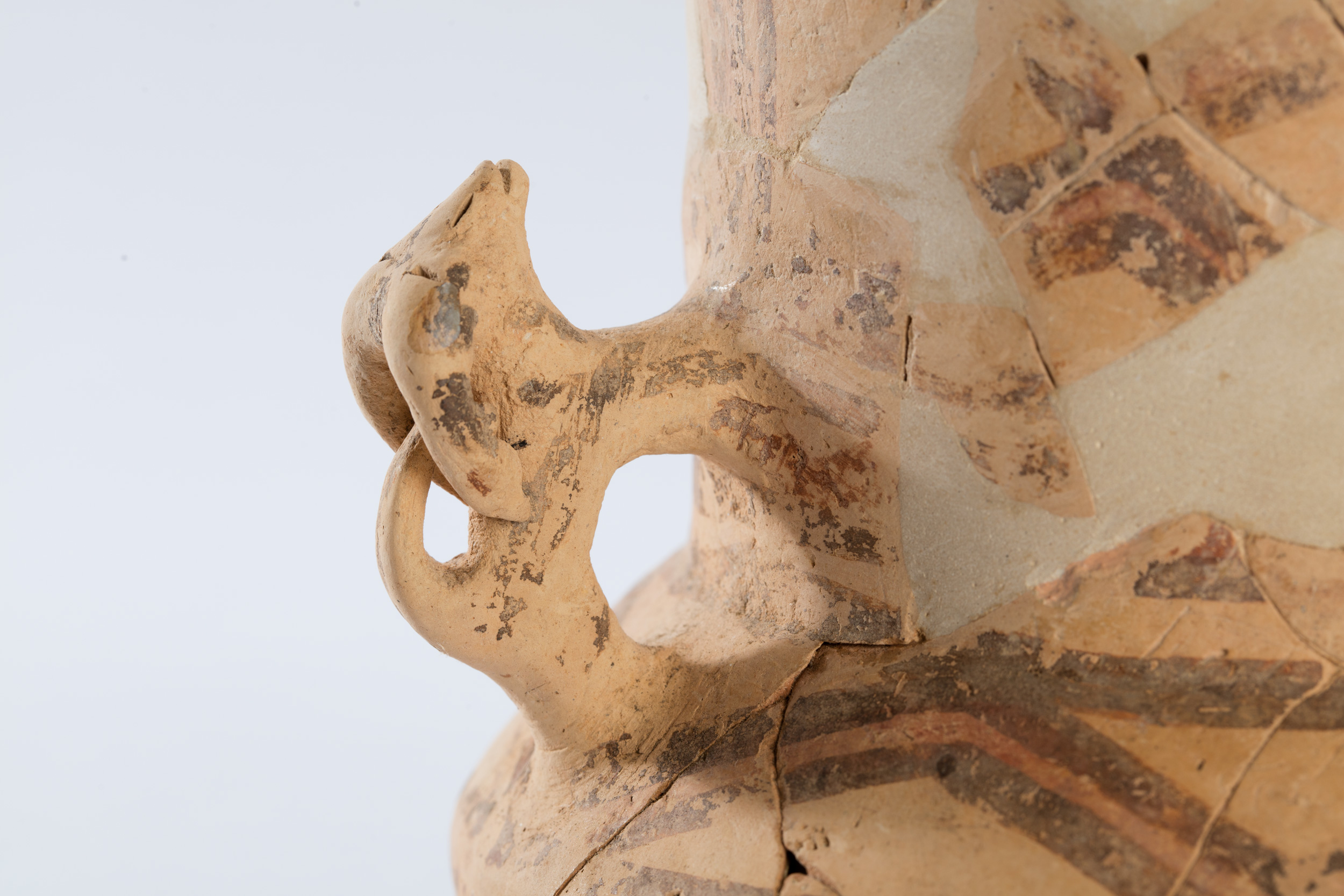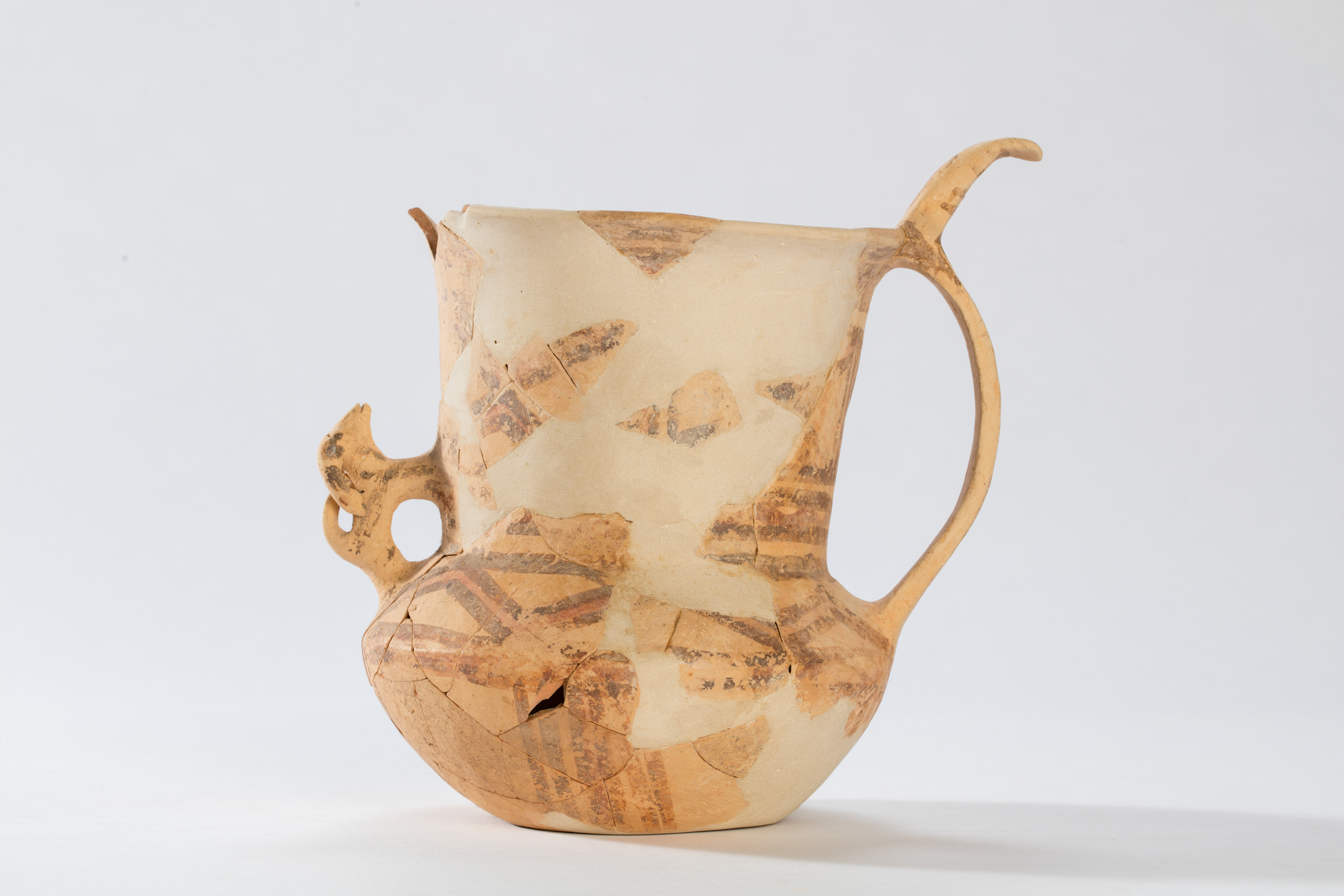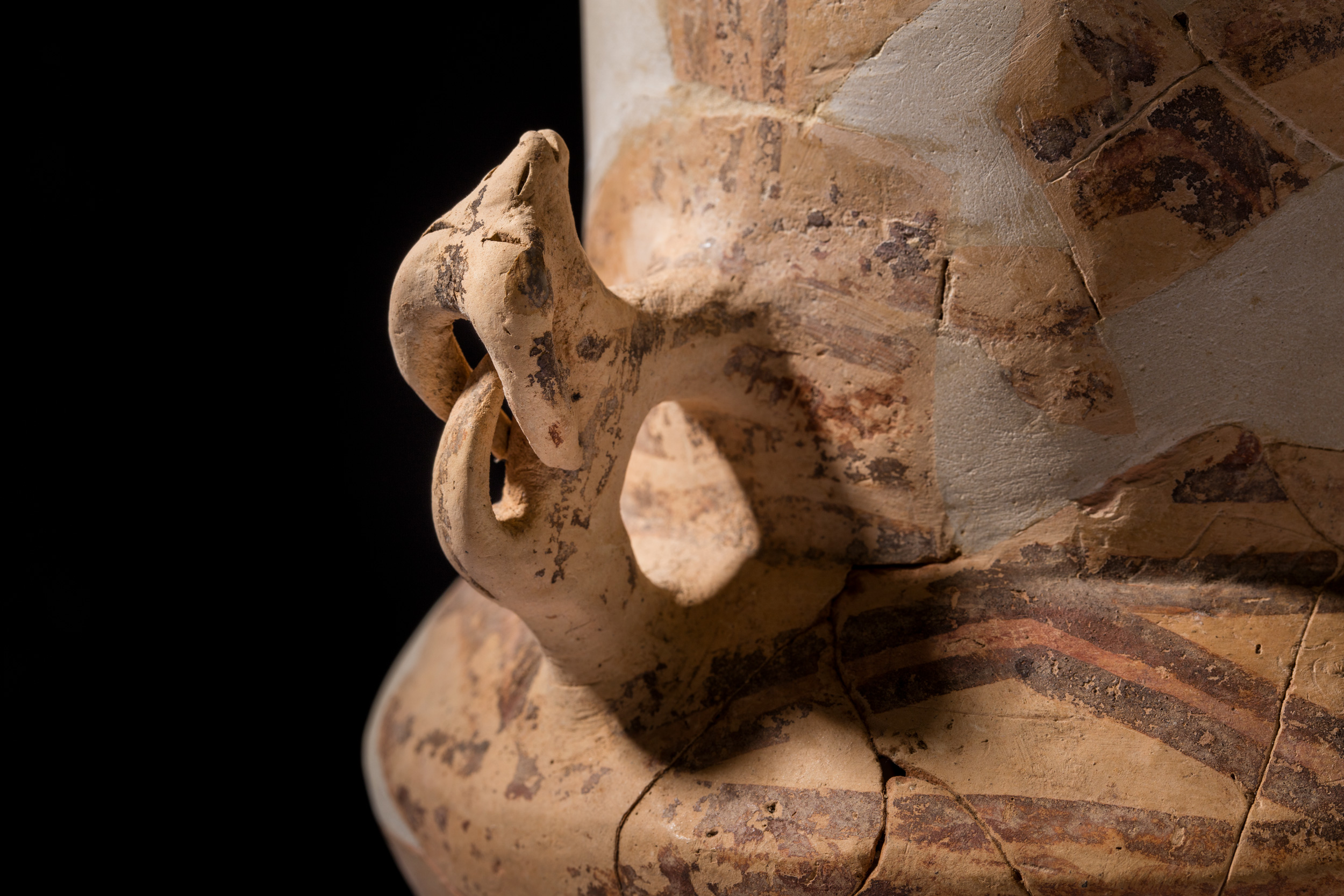
This geometric patterned ceramic jug or tankard is decorated in an ancient Cypriot tradition using animals as lugs and handles. The creature is attached via its legs to the body of the vessel and has a thin tail flipped over its back and two curling horns extending from its forehead. The potter has used small incisions to make eyes and a smiling mouth. This is a mouflon – the emblematic sheep of Cyprus.
The species was first introduced to the island from Central Asia around 11,000 years ago. Introducing new species was an important way for humans to settle in an area. It expanded the natural resources for food, textile and tool making and assisted with agricultural production and later urban living. When this pot was made, around 2700 years ago, artists frequently painted mouflon and scenes of wild and domesticated animals including birdlife on their ceramics. Mouflon were hunted and prized in later society. So much so that over time, the species has become significantly endangered and in the 1990s programs to reinvigorate the population had to bring more Mouflon to the island. Although the sheep were originally an introduced species – they have become an important symbol of Cyprus. Just like the native species of Australia, their image is used on national brand and sporting logos and added to coinage, circulating as an emblem of the country itself.






